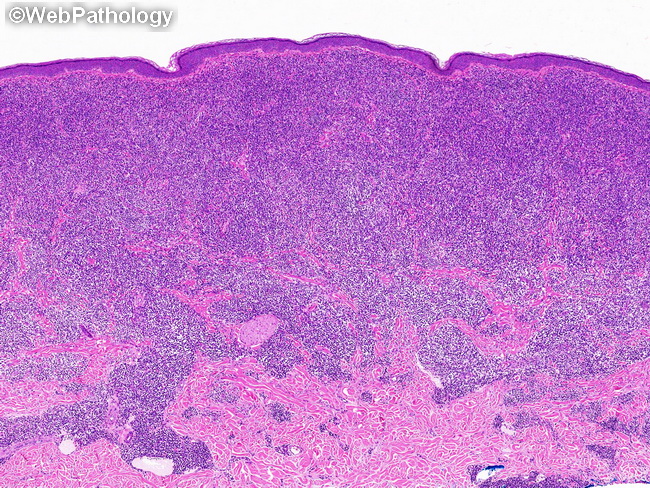Cutaneous Marginal Zone Lymphoma : Pathogenesis


Comments:
Cutaneous Marginal Zone Lymphoma (CMZL) - Pathogenesis : Skin normally does not have an associated B-cell lymphocyte population. Chronic antigenic stimulation from an intradermally-applied antigen (see examples below) can lead to the development of skin associated lymphoid tissue and eventually to the emergence of a B-cell clone. An association has been reported between a proportion of primary CMZL and infection by Borrelia burgdorferi. Some cases have resolved following antibiotic therapy. Rare cases of primary CMZL have occurred following tattoos, tick bites and vaccinations. (see this image for more details). The translocations reported in EMZL at other sites, including t(11;18), t(14;18), t(1;14), and t(3;14), are only rarely seen in primary CMZL. This low power view of a primary CMZL shows a plaque-like lymphoid infiltrate in the dermis and subcutis.



